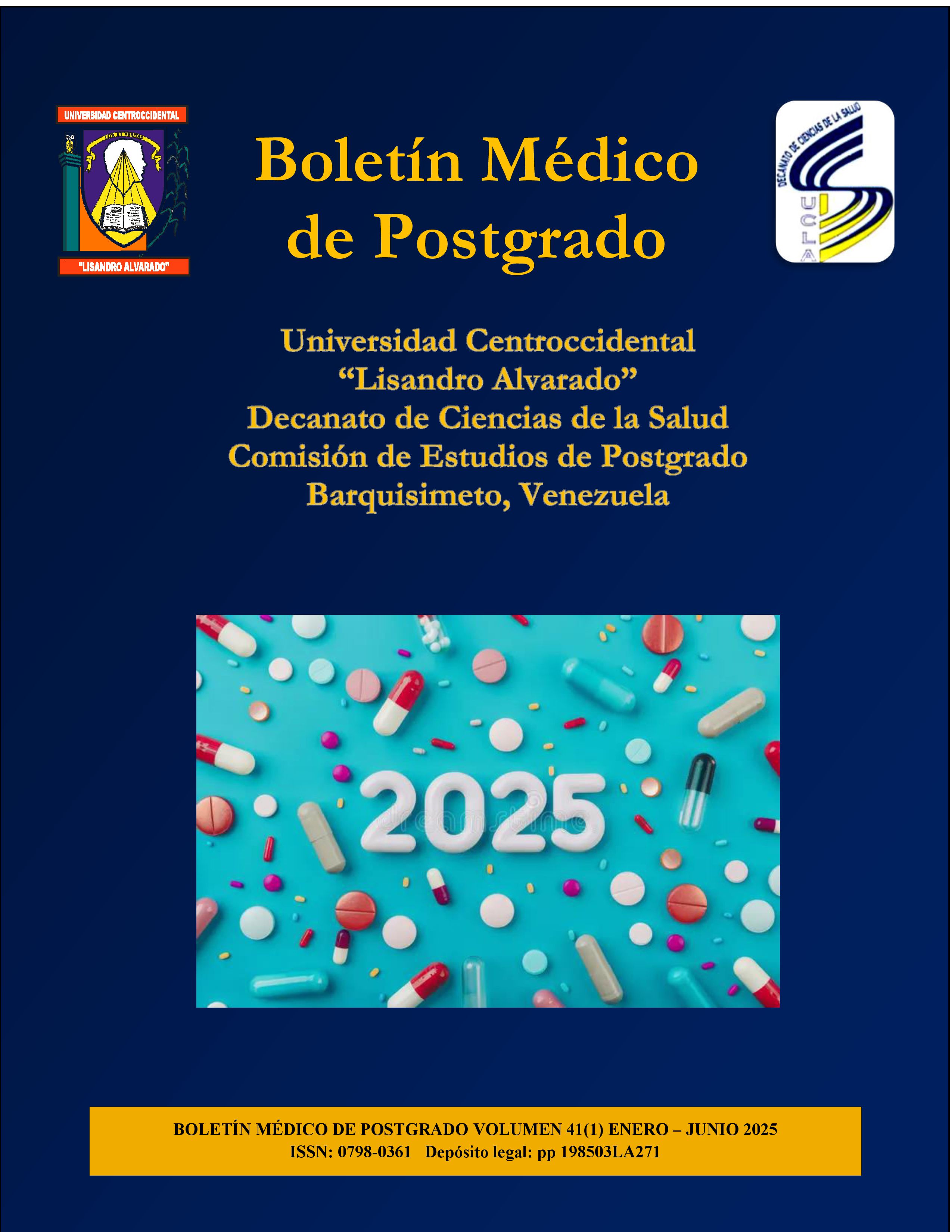Proposal for the creation of a psychoneuroimmunology unit to support internal medicine hospitalized patients of the Hospital Central Universitario Dr. Antonio María Pineda
Abstract
Quantitative research of the feasible project type was carried out to elaborate a proposal for the creation of a Psychoneuroimmunology Unit for the support of patients of the Internal Medicine Hospitalization Service of the Dr. Antonio María Pineda Central University Hospital. The study comprised three phases: the first was diagnostic, where the need for the creation of a support unit was investigated; the sample was non-probabilistic and intentional and consisted of 41 patients of the Internal Medicine Service with at least three days of hospitalization. The survey was used as a technique for data collection and the questionnaire was used as an instrument. Fifty-six percent of the hospitalized patients had at least one negative emotion at a high level. In the second phase, feasibility, the technical, financial, economic, institutional and social aspects were considered; the information was referred by the managers and health workers to whom a structured survey with mixed questions was applied, with the purpose of evaluating the feasibility of the program, obtaining that it is feasible in all the areas studied. The third phase corresponds to the design of the proposal, which was organized according to the results of the diagnostic and feasibility phase; it contains nine parts: presentation, justification, purpose, objectives, planning, organization, execution, activities and evaluation. The proposal will be used to provide an integrated health care service to the population.
Downloads
References
2. Cohen S, Kamarck T, Mermelstein, R. A global measure of perceived stress. Journal of Health and Social Behavior 1983; 24(4): 385-396.
3. Galicia L, Balderrama J, Navarro, R. Validez de contenido por juicio de expertos: propuesta de una herramienta virtual. Revista Apertura 2017; 9(2). Disponible en: http://www.scielo.org.mx/scielo.php?script=sci_arttext&pid=S1665-61802017000300042
4. Spielberger C, Gorsuch R, Lushene R. (1970). Manual for the State/Trait Anxiety Inventory. Palo Alto: Consulting Psychologists Press. Disponible en: http://www.scielo.org.mx/scielo.php?script=sci_arttext&pid=S1665-61802017000300042.
5. González M. (2007). Instrumentos de evaluación psicológica. Editorial Ciencias Médicas. Disponible en: http://newpsi.bvs-psi.org.br/ebooks2010/en/Acervo_files/InstrumentosEvaluacionPsicologica.pdf.
6. Grau J, Martín M, Portero D. Estrés, ansiedad, personalidad: resultados de las investigaciones cubanas efectuadas sobre la base del enfoque personal. Revista Interamericana de Psicología 1993; 27(1): 37-58.
7. Galicia L, Balderrama J, Navarro R. Validez de contenido por juicio de expertos: propuesta de una herramienta virtual. Revista Apertura 2017; 9(2). Disponible en: http://www.scielo.org.mx/scielo.php?script=sci_arttext&pid=S1665-61802017000300042.
8. Hernández A. (2008) El proyecto factible como modalidad en la investigación educativa. Tesis doctoral no publicada, para el grado Doctor en Educación. Disponible en: https://luiscastellanos.files.wordpress.com/2014/02/el-proyecto-factible-como-modalidad-en-la-investigacion-educativa-ana-hernandez.pdf.
Published
Versions
- 2025-01-06 (2)
- 2025-01-05 (1)
How to Cite
Issue
Section

This work is licensed under a Creative Commons Attribution-NonCommercial-ShareAlike 4.0 International License.
Las opiniones expresadas por los autores no necesariamente reflejan la postura del editor de la publicación ni de la UCLA. Se autoriza la reproducción total o parcial de los textos aquí publicados, siempre y cuando se cite la fuente completa y la dirección electrónica de esta revista. Los autores(as) tienen el derecho de utilizar sus artículos para cualquier propósito siempre y cuando se realice sin fines de lucro. Los autores(as) pueden publicar en internet o cualquier otro medio la versión final aprobada de su trabajo, luego que esta ha sido publicada en esta revista.



